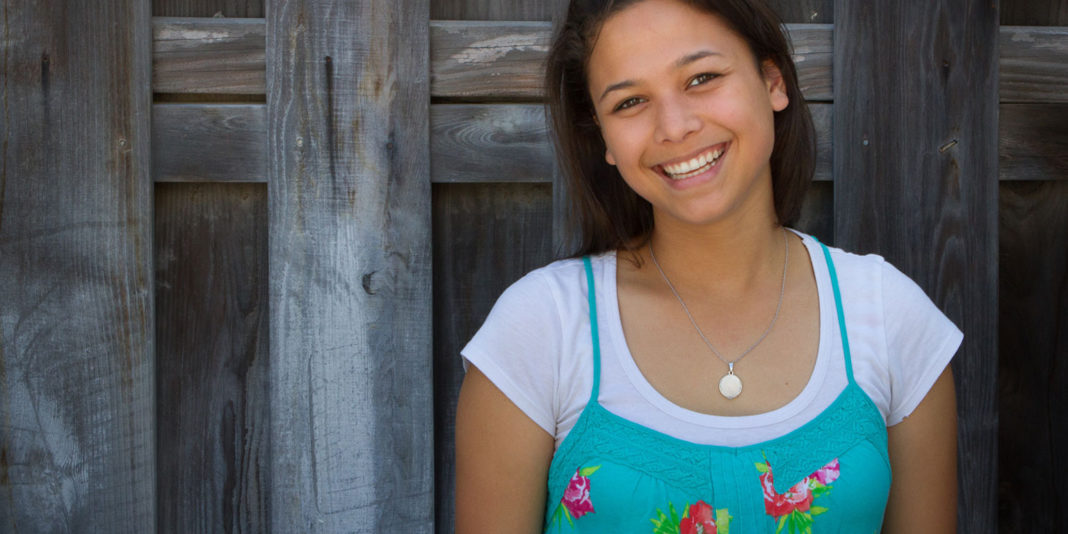A 13-year-old girl named Lua* was hospitalised with asthma. Lua, who was born in New Zealand to Samoan-born parents, shared with her nurse about wanting the human papillomavirus (HPV) vaccine, but said her parents had withheld consent
With the nurse present, Lua discussed with her teacher parents and her grandmother, who had migrated to New Zealand two years earlier, how she wanted the vaccine in order to be protected from potentially life-threatening cancer. She also told them that she was not planning her sexual debut, which particularly shaped the family’s opinion.
The grandmother was adamant that the vaccine would be useless for Lua as she was too young for sexual activity and the community would gossip, consequently bringing shame on the family. The parents accepted Lua’s rationale but, because of the grandmother’s concerns, withheld their consent – irrespective of Lua’s understanding of the health benefits and her right to freedom of choice.
Freedom of choice
Freedom of choice is illustrated through the ethical principle of autonomy; the right of individuals to self-determination through informed decision-making and consent.1,2
What Lua believed to be in her best interests was different from what her family believed to be in her best interests. From Lua’s perspective, being vaccinated favoured her best interest, regardless of future sexual activity, because the long-term protection was advantageous to her health. Whereas her grandmother believed that by having the vaccine Lua risked being judged by the community – a belief commonly found by researchers looking at barriers to HPV vaccination.3
However, as Lua can understand the benefit the vaccine offers, her right to autonomy should be considered, regardless of her age. This does not mean that children must be rational, autonomous decision-makers for all healthcare decisions, but consideration must be given to a child’s developing ability to understand health needs and participate in the decision-making process.5
Piaget pioneered the well-established stages of childhood development, which suggests that children over 10 years old begin to make increasingly autonomous choices, with consideration of how these choices have consequences.6,7
Inappropriate support of a child communicating their health needs can hinder their development of health literacy skills, which impacts on an individual’s active involvement in their healthcare.8 Promoting the development of health literacy skills leads to long-term mediators of enhanced health outcomes and better management of chronic conditions, such as asthma.9,10
Child’s competence to consent
In New Zealand law, individuals younger than 16 may or may not consent, conditional to being perceived as competent.11 A child’s competence to consent is regulated by two conflicting documents; the Care of Children Act 2004 which addresses the ‘status approach’, where age is a determinative; and the Health and Disability Commissioner (Code of Health and Disability Services Consumers’ Rights) Regulations 1996, which addresses the ‘maturity approach’ with respect to the consumer’s right to consent, which does not exclude children.
Children’s right to autonomy is supported through foreign case law: the Gillick case and the Convention on the Rights of the Child 1990, which introduces concepts of cognitive competence and diminishing paternalistic accountability regarding the growing capability of a child, respectively.12
Respecting a child’s decision obligates nurses to protect their patient’s right to autonomy, moving beyond the legal notion of competence to a degree of allowance for children to participate as decision-makers in healthcare.4 Alderson suggests a child’s competence relates to their inner qualities, which are influenced by culture, so in attempting to support a child’s autonomy there should be consideration of cultural values.13
Lua’s Pasifika cultural values of togetherness and wholeness may conflict with the western idea of individual autonomy.14 Pasifika children belong not only to their parents but to their grandparents, extended family and tribe. Therefore, health decisions are not a simple dyad of guardian and child, which suits a western model, but are made by the whole family.14
The consent process only needs a signed agreement from either parent, invalidating the cultural value of togetherness as the wider family members’ perspectives are not required to complete this process. This western approach to obtaining consent means that nurses pursue the guardians’ consent, neglecting the importance of family and impacting on the cultural safety of care delivered.13,15
Cultural safety involves understanding and accepting cultural differences which is essential to achieving high-quality nursing care.16 Culture influences individuals’ and families’ health beliefs and practices, which reflect the uptake of certain health interventions, like the HPV vaccine.14
However, children like Lua who have grown up in a western country experience acculturation, meaning changes in perspectives from their original cultural pattern generate discrepancies with health needs.17
The nurse’s role
Nurses understand and acknowledge the importance that family has in decision-making.14,16,18 In New Zealand it is widely accepted that cultural safety compares with the experience children and their families have with nursing care, extending beyond cultural awareness and sensitivity.16
There are difficulties in evaluating cultural competence as numerous measures regard ‘culture’ as either ethnicity or race, the traditional concept of culture.19 However, culture is also considered a personal sense of wellbeing, which can be shaken by recognising only traditional cultural systems and relationships.16,20
A nurse’s personal view of the importance of family involvement may hinder their ability to advocate for their patient’s best interests.21 Nurses are patient advocates, which ensures the patient’s own best interests are at the forefront and overrides familial concerns.1,20
I believe that Lua’s nurse should have been a stronger advocate and discussed with the family that the benefit of the vaccine outweighs the potential risk of community gossip. Yet the final decision concurred with the grandmother’s perception of Lua’s best interests, rather than acknowledging Lua’s individual autonomy.22
Family-centred care
Family-centred care (FCC) is an approach to child healthcare that acknowledges the partnership between families and nurses.22 This approach looks beyond the nurse-child interaction and individual autonomy to the needs and interests of the child’s family unit.23
Family participation enhances clinical outcomes for children in terms of improved recovery and development and negotiating families’ concerns and needs in healthcare attempts to reflect the families’ values and expectations.22,24
FCC favours a traditional approach to healthcare, which seems applicable to the Pasifika ‘Fonofale’ model of health.14 The Fonofale model defines health, with consideration given to the importance of family as family is the foundation of all Pasifika communities.25
However, nurses are facing limitations for delivering adequate FCC.24 The FCC approach requires nurses to recognise the family as experts about the child and acknowledge their belief in the child’s best interests.24 This proves difficult for nurses as they must integrate a family’s intimate knowledge about the child with acquired professional judgement on children’s health and the responsibility of being an advocate for the child.26 This discrepancy contributes to a lack of acceptance of FCC among nurses, making it difficult to be implemented in practice.24
Theoretically, FCC is a wonderful model, but it is impractical because children’s best interests are discarded in order for it to be successful.27 Differences between the perspectives of a child and their family are increasingly recognised due to the growing understanding of acculturation and acceptance of children’s autonomy.17 Nurses can no longer make assumptions that children’s perspectives and preferred health needs are shared with their families’ and ‘cultural norms’, as in Lua’s situation.14
A new approach
We need to find a new approach for delivering superior care to children and their families.27 We know that nurses have a responsibility to support their patient’s right to self-determination, indicative of a child’s growing autonomy and independence from their family.26 This understanding supports the child-centered care approach, where children are fully involved in all aspects of their care with consideration of their age and developmental stages.7
FCC does consider the involvement of children, but less emphasis is on the child and more on the family, neglecting the child’s capacity to make independent choices.7 However, adequate provision of care for a child must account for the social environment with which they interact; hence, consideration of family is essential for child-centered care.26 Therefore a compromise is required, as both concepts are intrinsically connected.7,26
The Bay of Plenty District Health Board has devised a ‘patient and FCC’ approach: delivering and evaluating healthcare based on partnerships between patients, families and healthcare providers, and recognising both patient and family perspectives.28 This concept is relatively new and it will take time to achieve a nationwide buy-in, but it may be the catalyst to providing care based explicitly on culture, family and children’s autonomy.28
It is difficult for nurses to support children’s autonomy while adhering to culturally safe care and an FCC approach. Therefore, further research needs to be undertaken to find a superior model that incorporates these three aspects of paediatric care.
*Not her real name.
References
- New Zealand Nurses Organisation. (2010). Code of Ethics.Wellington, New Zealand: Author.
- Beauchamp, T. L., & Childress, J. F. (2001).Principles of biomedical ethics(5th). New York, NY: Oxford University Press.
- Ferrer, H. B., Trotter, C., Hickman, M., & Audrey, S. (2014). Barriers and facilitators to HPV vaccination of young women in high-income countries: a qualitative systematic review and evidence synthesis. BioMed Central Public Health,14(700). doi:10.1186/1471-2458-14-700
- Ministry of Health. (2014). Human papillomavirus (HPV).Retrieved from https://www.health.govt.nz/your-health/healthy-living/immunisation/immunisation-older-children/human-papillomavirus-hpv
- Babcock, R. (2016). Medical decision-making for minors: Using care ethics to empower adolescents and amend the current power imbalances. Asian Bioethics Review,8(1), 4-19. Retrieved from https://muse.jhu.edu/journal/538
- Piaget, J. (1924). The language and thought of the child. London, England: Routledge.
- Majamanda, M. D., Munkhondya, T. T. M., Simbota, M., & Chikalipo, M. (2015). Family centeredcare versus child centeredcare: The Malawi context. Health, 7, 741-746. http://dx.doi.org/10.4236/health.2015.76088
- Harris, J., Springett, J., Booth, A., Campbell, F., Thompson, J., Goyder, E., … Yang, Y. (2015). Can community-based peer support promote health literacy and reduce inequalities? A realist review. Journal of Public Health Research, 3(3).http://dx.doi.org/10.3310/phr03030
- Butz, A., Pham, L., Lewis, L., Lewis, C., Hill, K., Walker, J., & Winkelstein, M. (2009). Rural children with asthma: Impact of parent and child asthma education program. Journal of Asthma, 42(10), 813-821. https://doi.org/10.1080/02770900500369850
- Horner, S. D. (2004). Effect of education on school-age children’s and parents’ asthma management. Journal for Specialists in Pediatric Nursing, 9(3), 95-102. doi:10.1111/J.1547-5069.2004.0095.x
- Ministry of Health. (1998). Consent in child and youth health: Information for practitioners. Wellington, New Zealand: Author.
- Wheeler, R. (2006). Gillick or Fraser? A plea for consistency over competency in children: Gillick and Fraser are not interchangeable. British Medical Journal,332(754), 5807. https://doi.org/10.1136/bmj.332.7545.807
- Alderson, P. (2007). Competent children? Minors’ consent to health care treatment and research. Social Science & Medicine, 65(11), 2272-2283. doi:10.1016/j.socscimed.2007.08.000
- Tiatia, J. (2008). Pacific cultural competencies: A literature review. Wellington, New Zealand: Ministry of Health.
- Lin, M., Pang, M. S., & Chen, C. (2013). Family as a whole: Elective surgery patients’ perception of the meaning of family involvement in decision making. Journal ofClinical Nursing, 22(1-2), 271-278. doi:10.1111/j.1365-2702.2012.04194.x
- Nursing Council of New Zealand. (2011). Guidelines for cultural safety, the Treaty ofWaitangi and Maori Health in nursing education and practice. Wellington, NewZealand: Author.
- Strickland, B. R. (2001). The Gale encyclopedia of psychology(2nd). Farmington Hills, MI: Gale Group.
- (2015). Principle 5: Culturally safe practice.Retrieved from https://www.kidshealth.org.nz/principle-5-culturally-safe-practice
- Loftin, C., Hartin, V., Branson, M., & Reyes, H. (2013). Measures of cultural competence in nurses: An integrative review. The Scientific World Journal, 2013, Article ID 289101. http://dx.doi.org/10.1155/2013/289101
- Neutzling, B. R., Barlem, J. G. T., Barlem, E. L. D., Hirsh, C. D., Pereira, L. A., & Schallenberguer, C. D. (2017). Defending the rights of children in a hospital setting: nurses’ advocacy in health. Anna Nery School Journal of Nursing, 21(1). http://dx.doi.org/10.5935/1414-8145.20170025
- Richardson, F. & MacGibbon, L. (2010). Cultural safety: Nurses’ accounts of negotiating the order of things. Women’s Studies Journal, 24(2), 54-65. Retrieved from http://www.wsanz.org.nz/
- Carter, B., & Ford, K. (2013). Researching children’s health experiences: the place for participatory, child-centered, arts-based approaches. Research in Nursing andHealth, 36(1), 95-107. doi:10.1002/nur.21517
- Shields, L., Pratt, J., & Hunter, J. (2006).Family centeredcare: a review of qualitative studies. Journal of Clinical Nursing, 15(10), 1317-1323. doi:10.111/j.1365-2702.2006.01433.x
- Coyne, I., O’Neill, C., Murphy, M., Costello, T., & O’Shea, R. (2011). What does family-centredcare mean to nurses and how do they think it could be enhanced in practice. Journal of Advanced Nursing, 67(12), 2561-2573. doi:10.1111/j.1365-2648.2011.05768.x
- Pulotu-Endemann, F. K. (2001, September). Fonofale: Model of health.Paper presented at the Health Promotion Forum, Wellington, New Zealand.
- Franck, L. S., & Callery, P. (2004). Re-thinking family-centredcare across the continuum of children’s healthcare. Child: Care, health, and development,30(3), 265-277. doi:10.1111/j.1365-2214.2004.00412.x
- Shields, L. (2010). Questioning family-centered care. Journal of Clinical Nursing,19(17-18), 2629-2638. doi:10.1111/j.1365-2702.2010.03214.x
Boon, A. (2012). Excellence through patient and family centeredcare.(Phase 1 Final Report). Tauranga, New Zealand: Bay of Plenty District Health Board. Retrieved from https://www.hqsc.govt.nz/assets/Other-Topics/QS-challenge-reports/Excellence-through-family-and-patient-centred-care-Final-Report.pdf





















